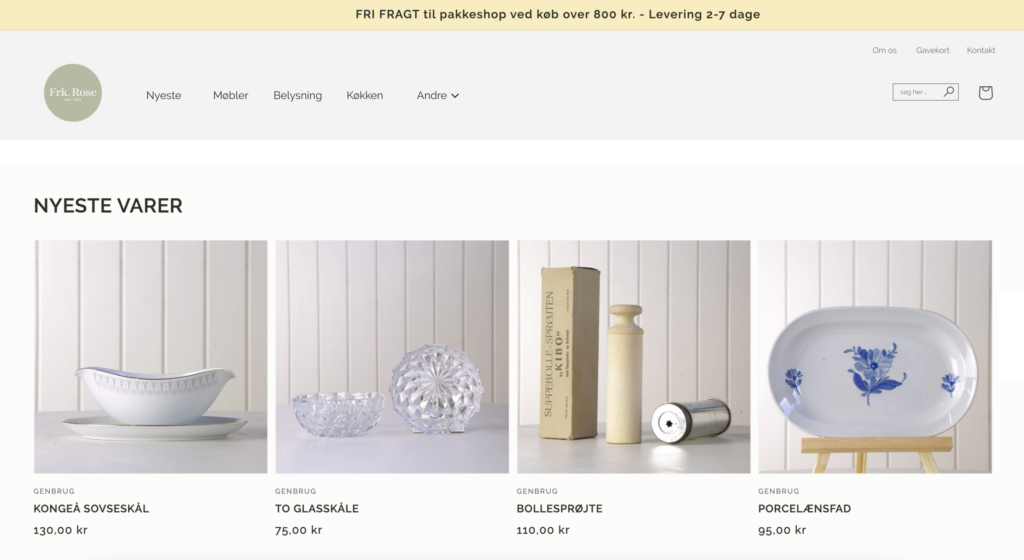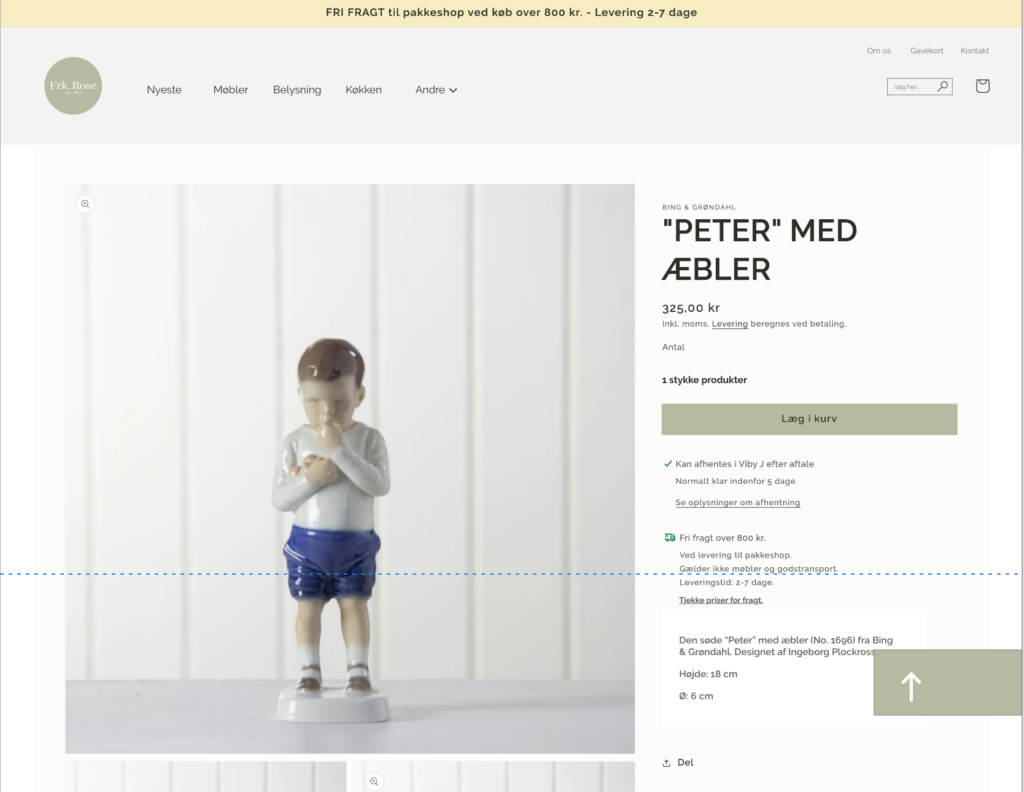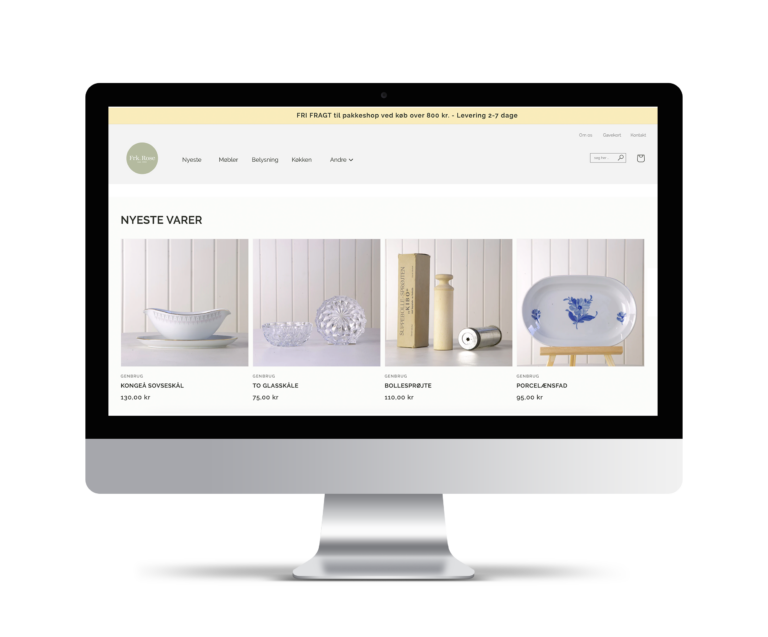Mission Afrika - Frk.Rose
Research and design digital strategies for an e-commerce website - build a cross-platform strategy to increase traffic and conversion rates.
Project Description
Mission Afrika has launched a web shop called Frk.Rose. The scope of the web shop is to raise money for women in Afrika, at the same time to raise awareness of Mission Afrika’s activities.
One of the issues Frk.Rose deals with at the moment is a relative small rate of conversion, even though the traffic is significant – due to smart investment in SEO and social media advertisement. Therefore the question arises: is the small rate of conversion due to system failure, or due to product selection?
This project focuses on the digital capabilities, investigating the current system status, analysing the data and building a strategy for future implementation.
Project tasks:
- UX Research: Analyse the target audience
- Perform a UX audit and analysis
- Set up a documentation structure for the future
- Help set up a digital strategy cross-platform : website and social media
Role responsibilities
- Maintain communication with stakeholders.
- Perform research – quantitative and qualitative data: build a customer profile and Provisional persona.
- Run a UX audit, analyse website performance and experience based on heuristics reflection.
- Formulate a list of digital tranformation recommendations for future improvements.
Goal
The goal of the project is to help Mission Afrika build a better experience for their customers, boost conversion rate and become a trusted store where to return for future purchases. One of the goals is to develop a cross-platform strategy to boost traffic and build an unitary experience – build a stronger brand presence.
Year
March 2023
Role
Digital Strategy Consultant and UX Designer
Tools
Adobe XD
HotJar
Miro
Google Analytics 4
Shopify Analytics
Skills
User research and persona
UX analysis
User flow
Design thinking
1. User Research
The first step of the project is to perform User research – map and understand the main group of users that visit and navigate through the web shop. Research helps understand the user profile, behaviors and goals – improving design and optimising the funnel of conversion.
Stept through the process:
- set up and observe Google Analytics 4 data
- install HotJar and observe user recordings
- analyse Shopify analytics
HotJar
HotJar provided a lot of qualitative data, such as identifying the user behaviour and mapping out common patterns.
With the help of the Recordings I could individually observe visits with high relevance, from users that placed an order, see how they navigate platform and engage during the interaction wit the platform. The Heatmaps came in handy to generally observe navigation patterns, attention points, and how are the clicks distributed for each individual page.
The result of the HotJar identified some usability issues which are going to be addressed in the UX audit later during the process.
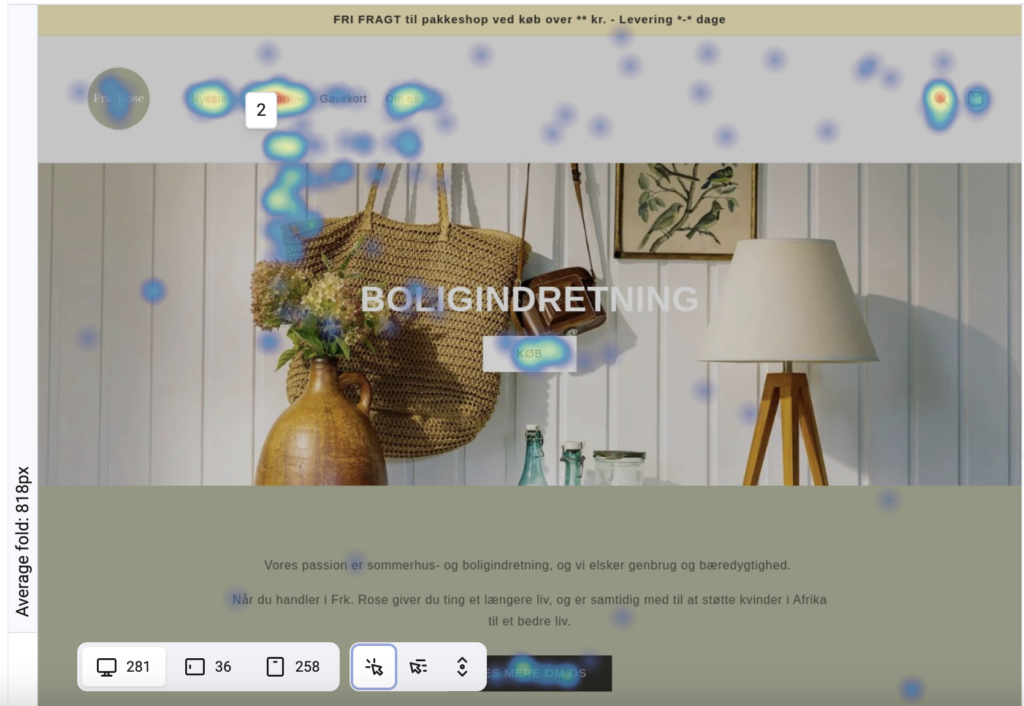
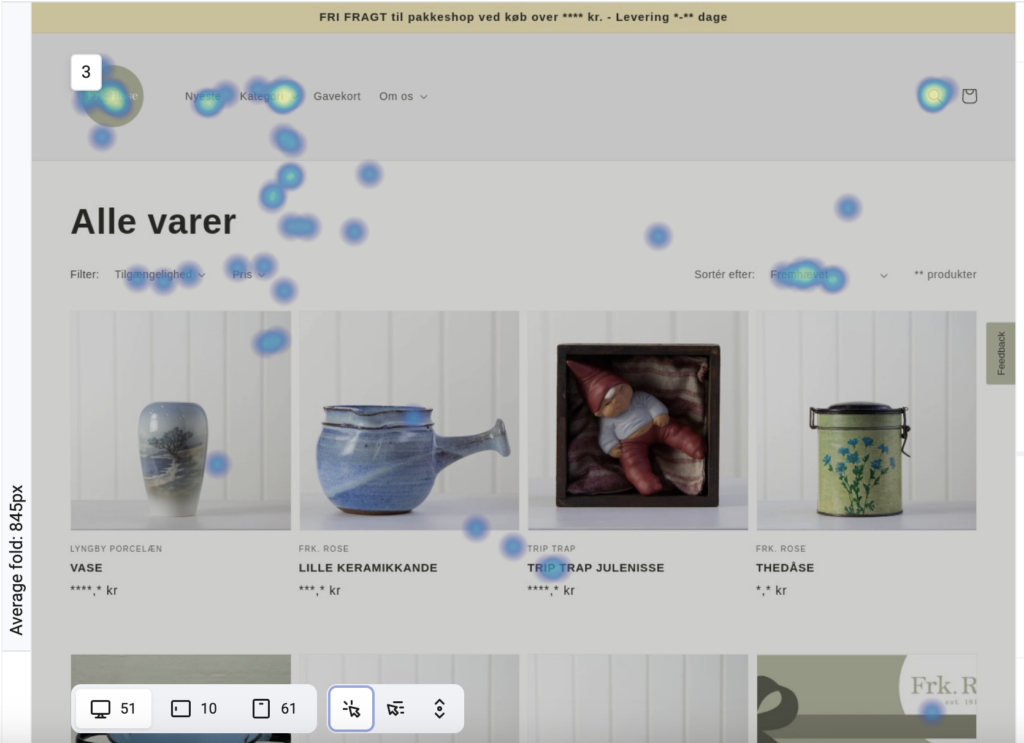
2. UX audit
2.1 Why the audit?
Independent to the User research, the audit helps to map out usability and experience issues, based on the Heuristics evaluation. To perform the evaluation. every page and feature (navigation, filtering and sorting) have been evaluated individually.
2.2 How is it done?
The analysis contains visuals with pins – actually presenting the section identified with an issue, for every pin number there is an explanation of the issue found. Issues identified on the entire page/section is presented in the General comments section
2.3 Audit
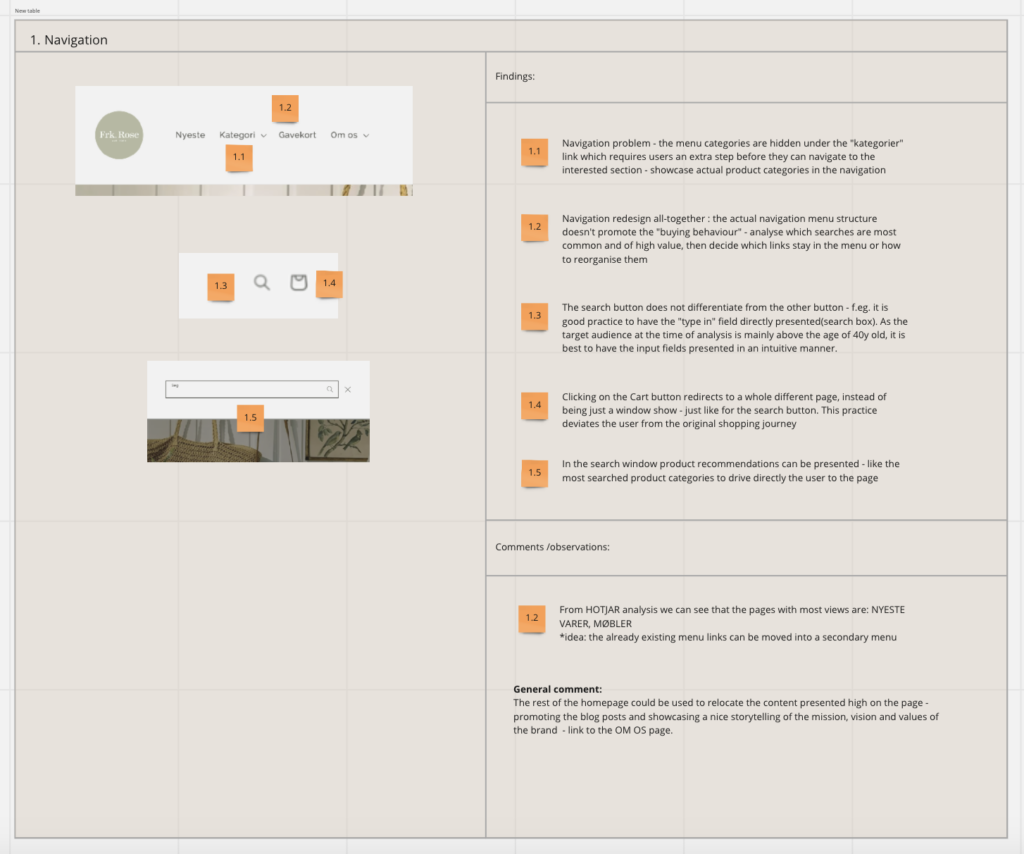
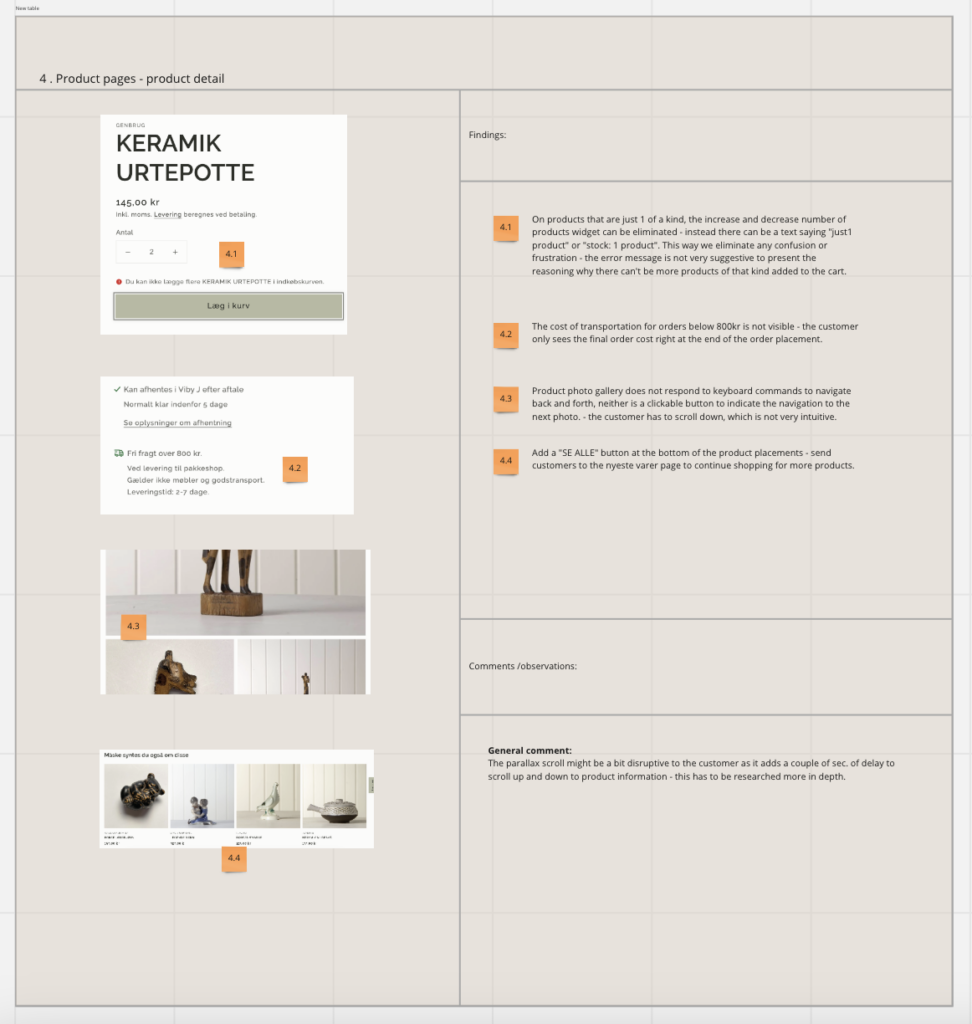
3. Design
With the research in hand, all data collected and analyzed, the design process can start. Previous stages provided in depth understanding of the target audience. whereas the audit mapped out usability and experience issues of the platform.
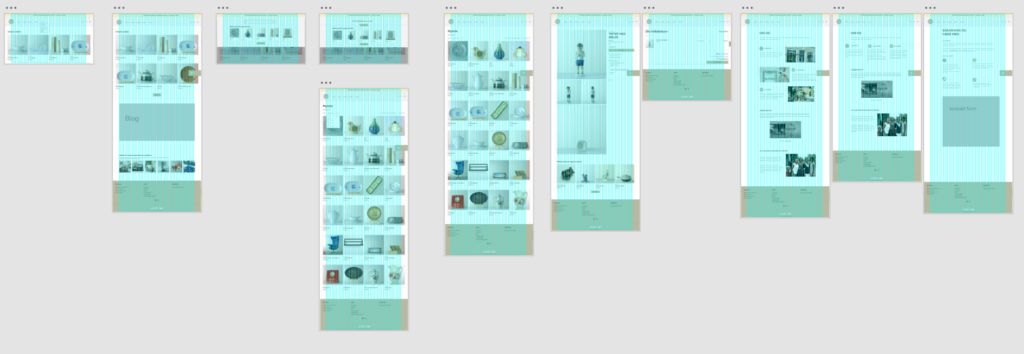
High priority usability problems:
